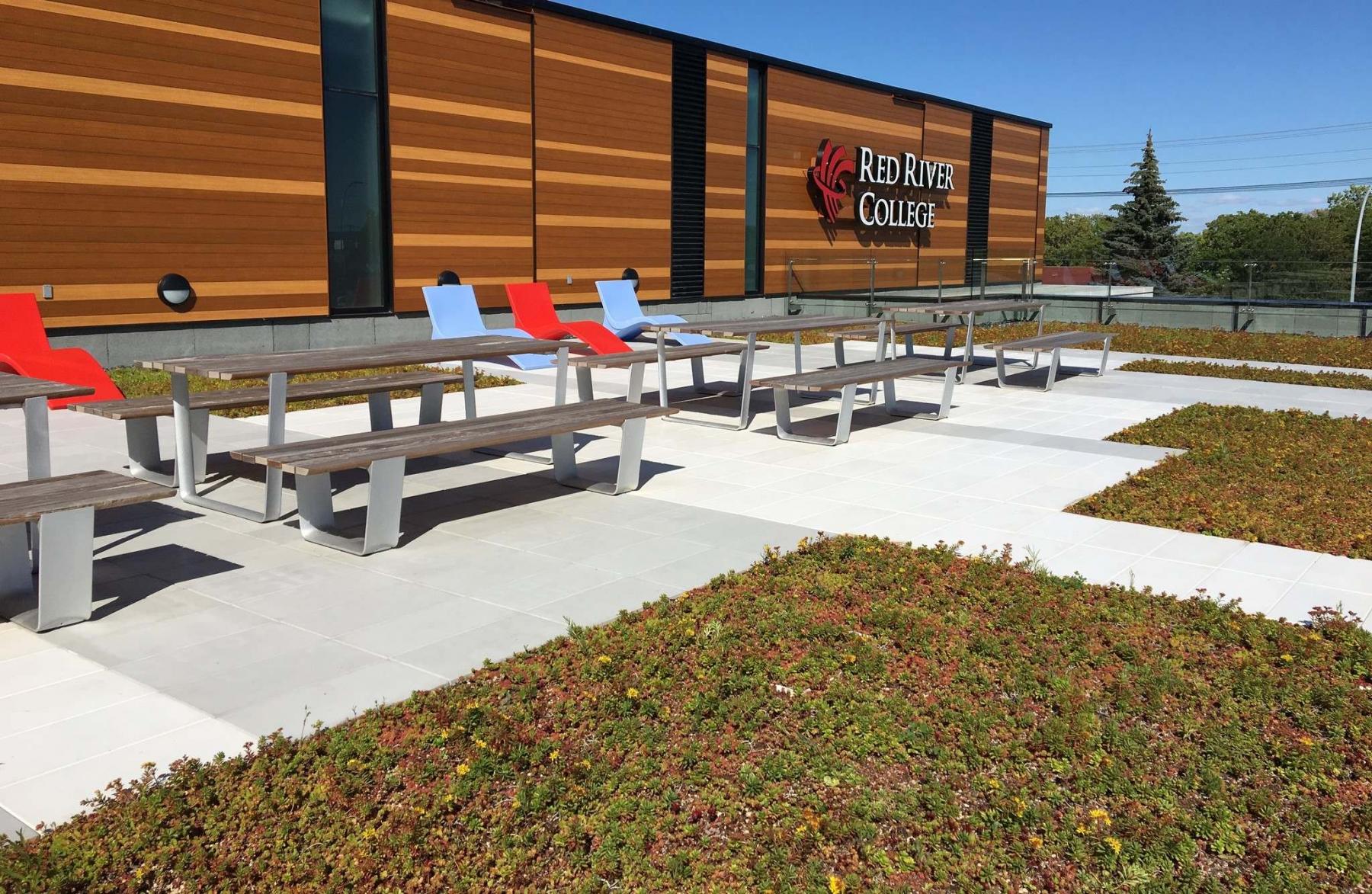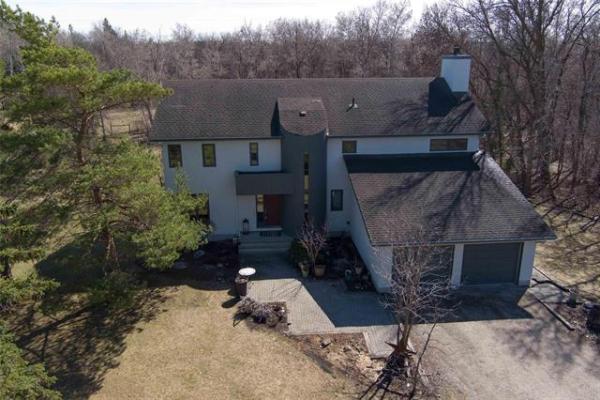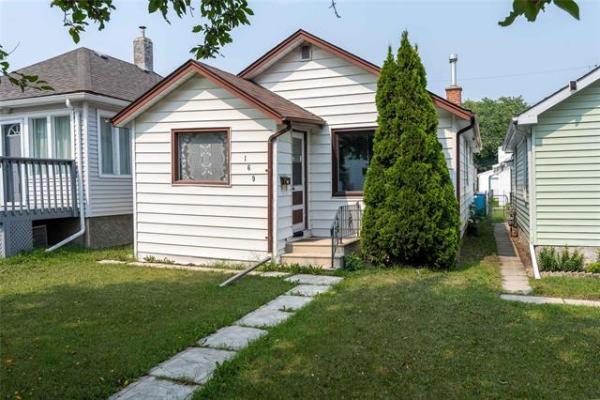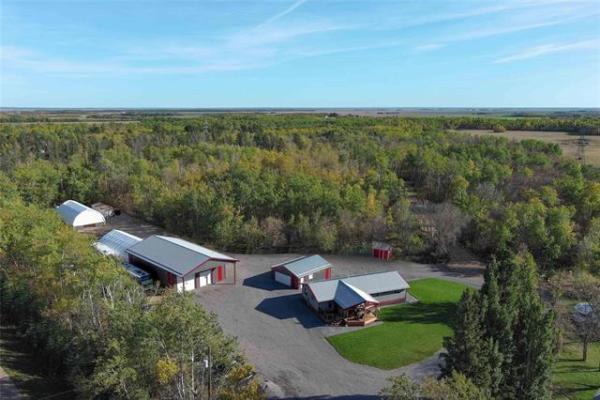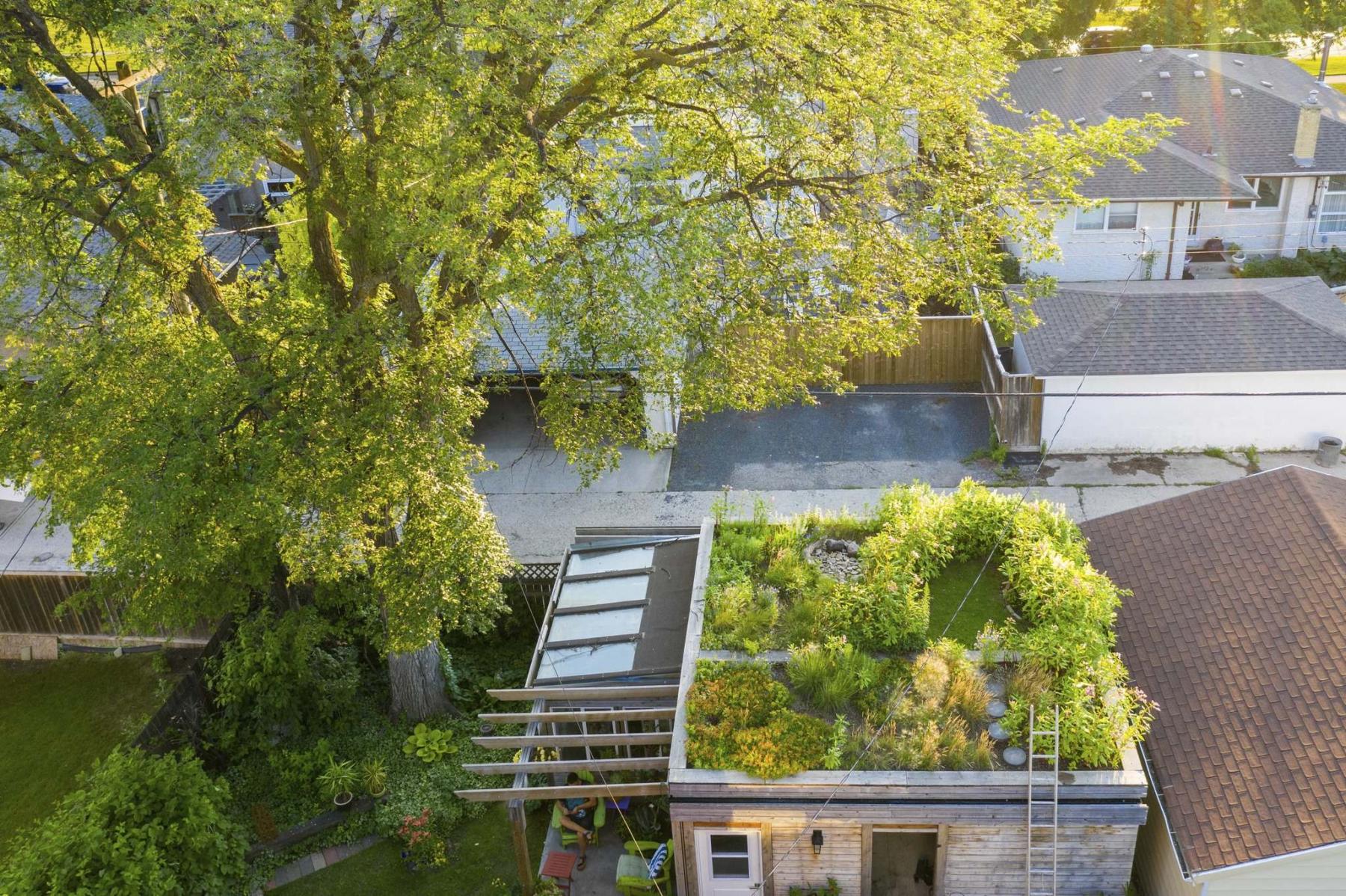
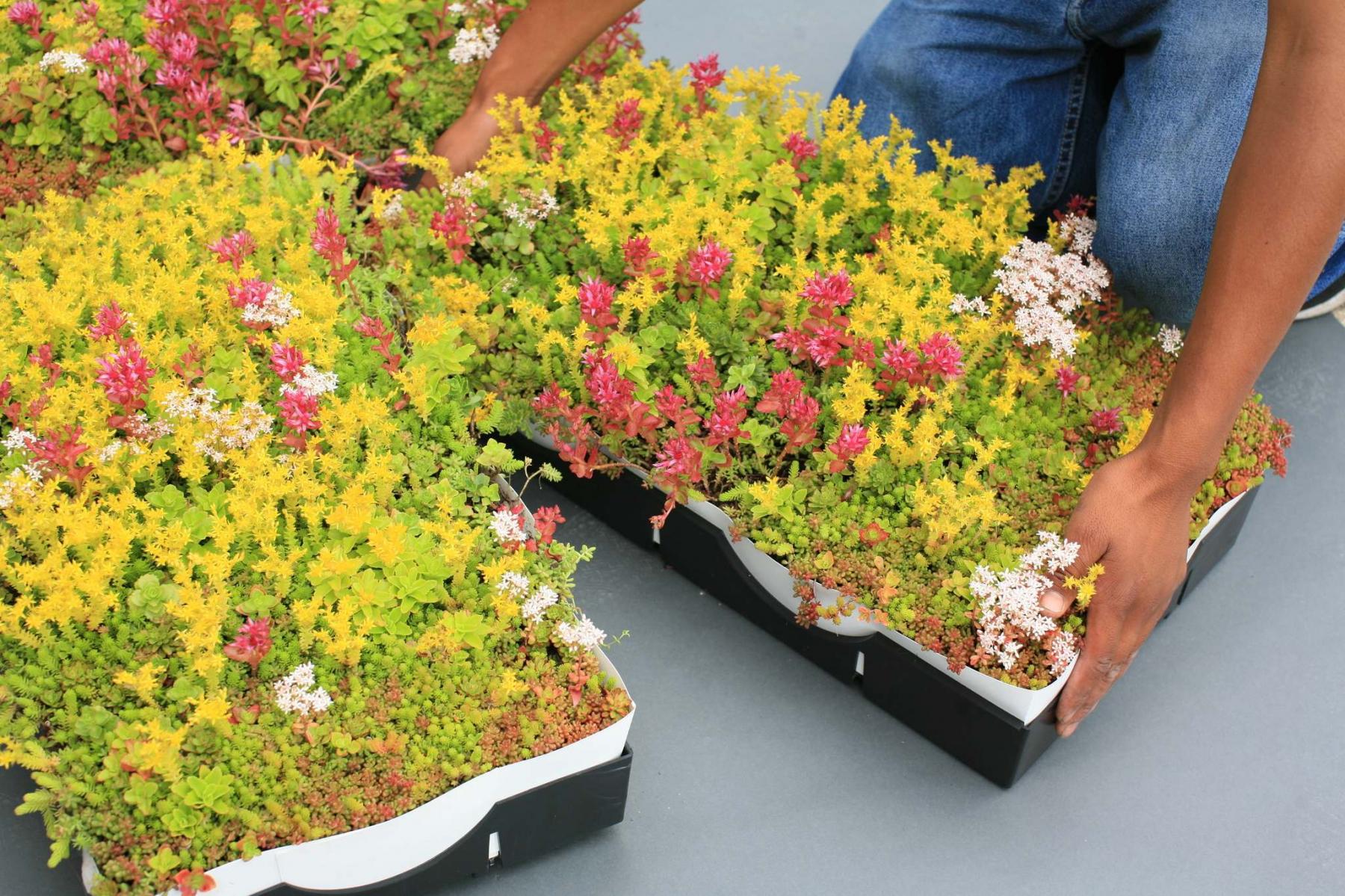
A mix of sedum.
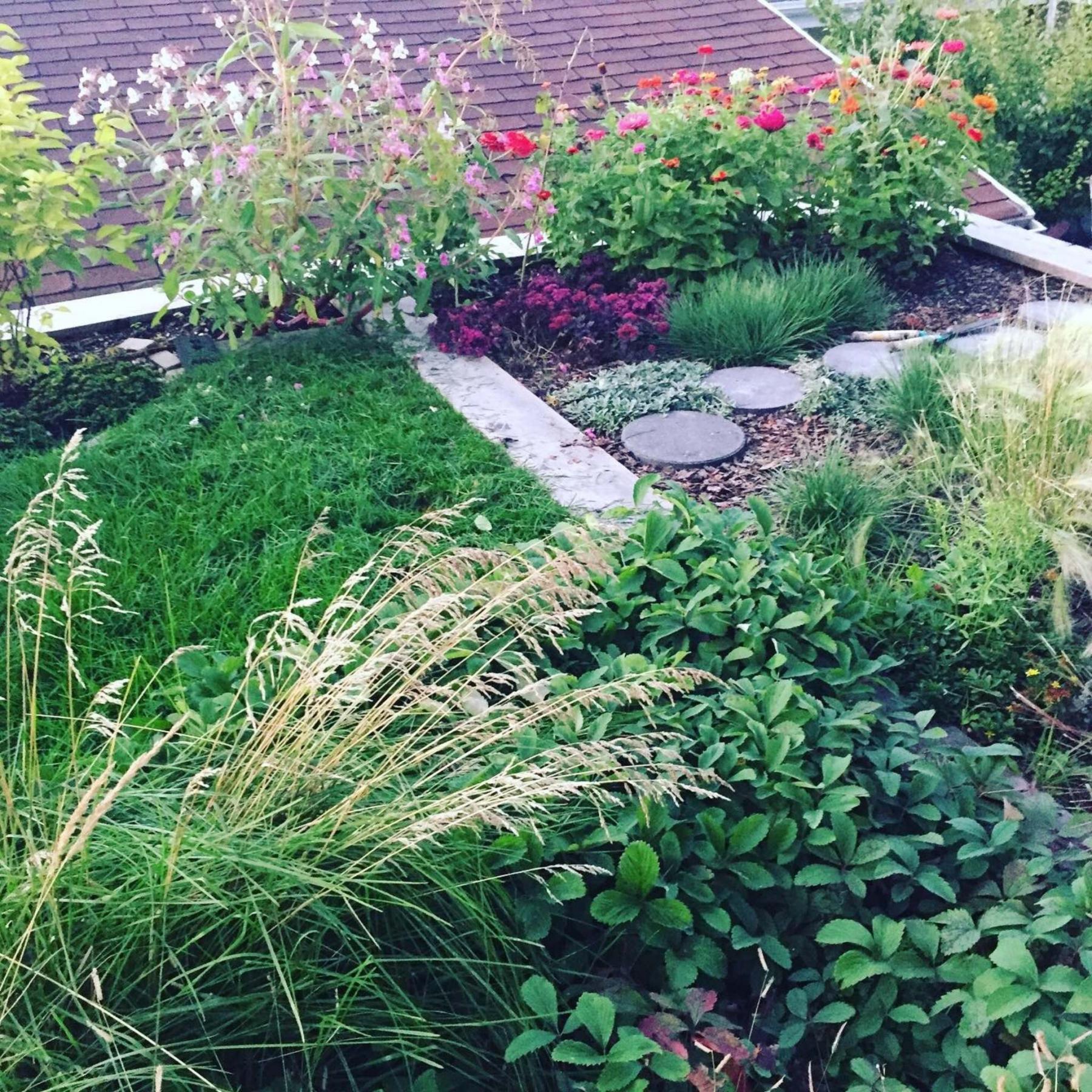
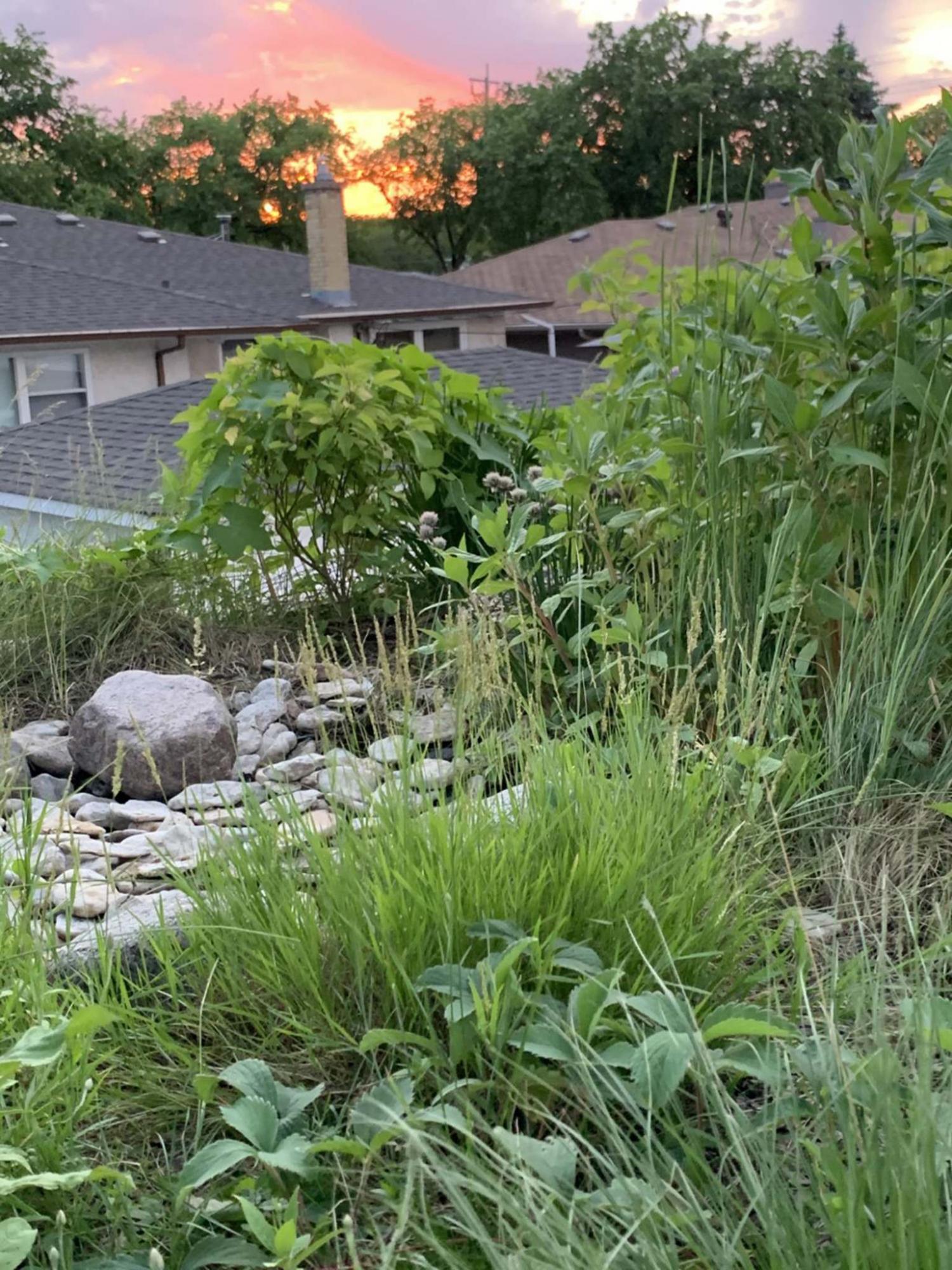
Manitoba was never going to be at the forefront of the green roof movement in Canada but while greening our rooftops is still a relatively novel concept here, things are starting to look up. Prominent examples of green roofs in Manitoba include Oak Hammock Marsh Interpretive Centre, Canadian Museum for Human Rights and the Qualico Family Centre at Assiniboine Park. These feature a mix of prairie wildflowers and native grasses.
Significantly, the green roof at Red River College’s Skilled Trades and Technology Centre features the first modular system green roof in Manitoba. LiveRoof, a Calgary-based green roof innovator, provided the unique patented system which consists of modules filled with engineered soil and planted with hardy, drought tolerant plants, LiveRoof, a licenced grower for the Canadian prairies, has recently teamed up with Vanstone Nurseries in Portage la Prairie to produce its product for Winnipeg installations.
"Our product is modular, meaning the plants, soil and drainage layer are built-in to a plastic container that is placed on the site after being fully matured," says Amber Ponce, business development manager at LiveRoof. The modular system has a plastic sleeve that is removed after the modules are placed on the roof for a seamless finish. "Most green roofs in Northern climates include a selection of cold-hardy sedums, a low-growing, shallow-rooting, water-conserving and drought-tolerant genus of plants typically native to alpine regions," says Ponce. If the soil is deep enough (150 to 200 mm), then a selection of traditional garden perennials and grasses may be successfully supported in southern Manitoba’s zone 3b climate.
LiveRoof has green roofs in Minneapolis-St. Paul and Duluth that are more than 10 years old but has only started to see demand for green roofs in Manitoba in the past three or four years. Nathan Gill, sales manager at LiveRoof, says the majority of green roof installations are on commercial properties. "The main drivers of green roof implementation are often commercial projects looking to get LEED certification, stormwater management or added amenity space," says Gill. "There is a greater awareness of the value of creating a quality of life or experience for the people that live and work within a space and for people to be closer to nature. The simplest way to do that in the urban environment is to provide live plant material."
In Winnipeg’s residential areas, green roofs and rooftop gardens are much more of a niche market. Greg Klassen is a Winnipeg homeowner who is right on the cutting edge. Klassen is the marketing director at Manitoba Theatre for Young People. He has been a zealous gardener all his life. The house where he and his husband have lived for the past twenty years was built in the mid-1950s by Allan Waisman, a Winnipeg architect. After completely reinventing his front yard and backyard landscape by adding a sunken garden, rock garden and an extensive selection of exotic flowering and foliage plants that fit a formal garden style, Klassen was ready to take on a new opportunity. The idea for a rooftop garden was born out of looking out his bedroom window one morning and realizing that one can never have enough plants.
Actually, Klassen decided that the decades-old carport directly outside his bedroom window had outlived its usefulness and he visualized brand new planting possibilities. Klassen hired an architect and an engineer. Today, the space once occupied by a carport is now a year-round greenhouse with its own spacious rooftop garden. The weight-bearing capacity of the flat greenhouse roof is so structurally sound, says Klassen, that it could support the weight of six half-ton trucks. That is critical since green roofs must be designed for durability to support plant material, growing media and other components such as a filter layer, drainage layer, protection fabric, root barrier, waterproofing membrane, etc.
Above the waterproofing membrane on Klassen’s green roof, there is 3.8 cm of gravel topped by a layer of landscape fabric and then a 15 to 17 cm layer of soil mix which is a combination of bark, topsoil and peat moss. After a truck with a conveyor belt elevated the soil (12 yards in all) and gravel to the rooftop, Klassen immediately started planting and designing his rooftop garden. Now in its fourth year, Klassen’s rooftop garden is a small-space marvel complete with a water feature, stepping stones, a small grassy area with room enough to relax in a chair or in a comfortable, stretched out position for stargazing, and above all, a plant palette filled with textures and colour.
Unlike the dappled light that shades Klassen’s ground-level garden and the sheltered conditions it provides, his rooftop garden is exposed to all the elements and hence the plant palette is partly by design but also driven by necessity. It’s also reminiscent of Klassen’s prairie roots (he was born in Carman) and includes Centaurea cyanus bachelor’s button, zinnias, Antennaria pussytoes, Andropogon Little Bluestem grass, calendula, Panicum virgatum switchgrass, poppies, strawberries, Bouteloua gracilis Blue Grama grass, Koeleria macrantha Prairie June grass, chives, phlox, sunflower varieties, wild cucumber, and more. He’s not done yet and plans to add Geum triflorum Three-flowered avens.
Just as his main garden with its multiple rooms provides visitors with a sense of discovery, Klassen has masterfully injected a feeling of discovery in his rooftop garden with sequences of blooms, different heights and shapes of plants, movement from the swaying of grasses, and the soothing sound of water. The use of shallow-rooted shrubs such as Morden Amber dogwood define the boundary of the rooftop garden while also creating a visual sense of enclosure.
Klassen knew the conditions on the roof would be harsh and that plants would be exposed to full sun and the effects of wind. He chose plants based on the depth of their root systems as well as their drought tolerance. Birds, butterflies, and bees visit the plants and Klassen has also observed them enjoying the water feature.
It is true that Klassen occasionally hauls his lawn mower up the ladder to his green roof so that he can mow the grassy patch – a sight that at first startled some of his neighbours. But the rooftop garden means much more to Klassen than the maintenance that is sometimes required. It is a unique space to sit and read, stare up at the treetops and clouds or watch the sun rise in the morning and set in the evening. "There is something about being five metres above the ground that feels completely different," says Klassen. "It feels like magic." A definite bonus: his rooftop plants are inaccessible to rabbits or deer.
Klassen wonders why there are not more green roofs in Winnipeg. The expense involved is one reason. "But I think we just don’t get how great they are for the planet quite yet," he says.
A green roof is a living thing, says Gill. It is going to require water from time to time and possibly even intervention after a harsh winter or extreme summer. Prices vary depending on media depth, plant material, access, amenity accessories and materials utilized.
colleenizacharias@gmail.com

